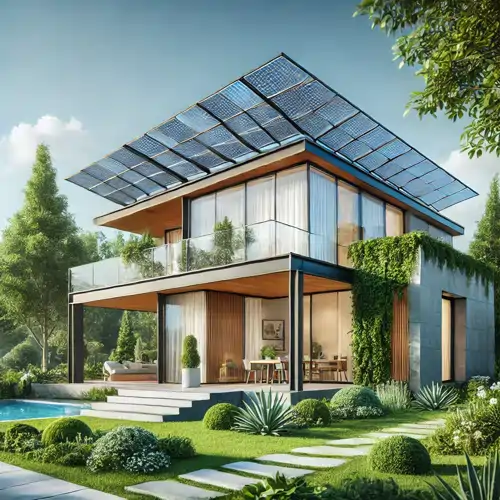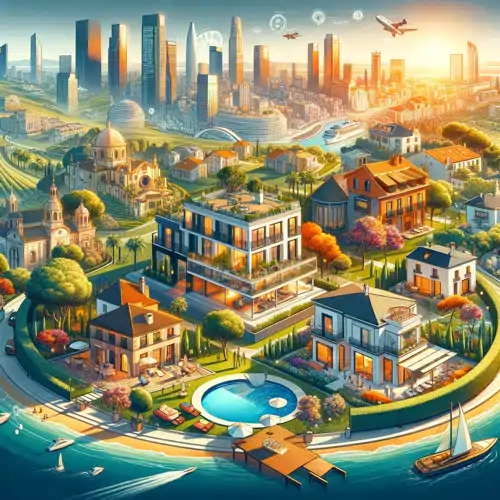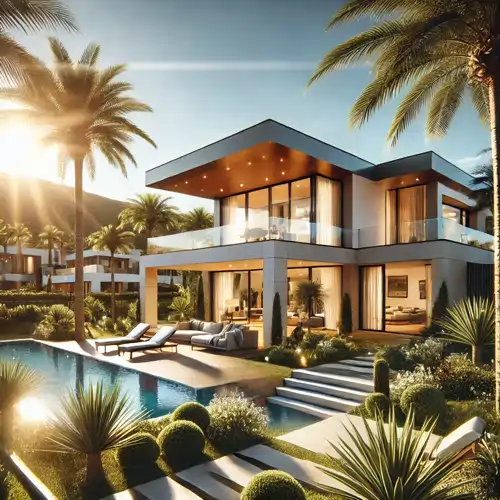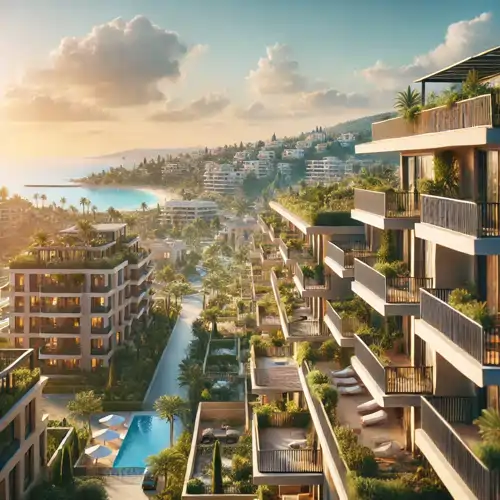The growing awareness of environmental issues and the rising cost of utilities in traditional homes force buyers to seek alternative housing options. Eco-friendly real estate is becoming increasingly relevant as it combines energy efficiency, the use of renewable energy sources, and modern technologies. In Spain, where the sunny climate and favorable conditions for installing solar panels prevail, sustainable homes show high potential for reducing operating expenses and minimizing environmental impact.
Current Issues and Pain Points of Potential Buyers
The main challenges faced by buyers of traditional housing are related to high electricity and heating costs, inefficient insulation, and outdated engineering systems. Additionally, many homes do not meet modern standards of comfort and safety, leading to the need for frequent repairs and updates. These issues are exacerbated by increasingly strict environmental regulations that require homeowners to pay extra attention to energy efficiency and the eco-friendliness of materials.
Key Solutions: Advantages of Eco-Friendly Homes
Eco-friendly homes represent a set of solutions aimed at reducing expenses and improving quality of life. The main advantages of these properties include:
- Energy Efficiency. Modern homes are equipped with solar energy systems that significantly reduce electricity bills. The installation of solar panels, along with the use of passive heating and cooling technologies, ensures stable comfort with minimal energy consumption.
- Use of Renewable Energy Sources. In addition to solar energy, many projects incorporate wind power systems and geothermal heating (geothermal heating - the use of geothermal energy to warm spaces). This helps reduce dependency on traditional energy sources.
- Smart Home (Intelligent Home). Integrated automation systems allow for optimized control of lighting, heating, and air conditioning, further reducing energy consumption and enhancing living comfort.
- Use of Eco-Friendly Materials. The use of natural and recycled materials decreases the negative impact on the environment. Materials such as bamboo, recycled glass, and natural stone not only offer high durability but also contribute to creating a healthy microclimate.
- Eco Design and Sustainable Planning. The optimal placement of windows, well-planned insulation, and passive design allow for maximum utilization of natural light and heat, reducing heating and cooling costs.
Examples of Implementing Eco-Friendly Solutions in Spain
The Spanish real estate market already features successful projects that demonstrate the advantages of sustainable homes. For example, projects like Casa GG reduce external energy consumption by installing solar panels and an effective ventilation system. Other properties, such as Casa Bynyesc, use innovative materials - sheep wool and wood shavings - which help reduce energy consumption to 10 kW per 1 sq. m.
Technologies used in homes such as Vivienda Assyce-Ecoholísticas are based on the use of recycled metal containers insulated with mineral wool and polyurethane. Such solutions can save up to 90 percent of energy while creating a comfortable indoor microclimate. Examples of properties, such as Villa Ana and Vivienda geodésica en Jumilla, demonstrate how autonomous resource production and thoughtful design can achieve nearly zero external energy consumption.
Construction Process and Certification
It is possible to build an eco-friendly home based on a custom design that takes into account the building's orientation, minimal environmental impact, and optimal use of natural resources. In the initial stage, a detailed 3D design is created that allows visualization of the layout and assessment of the property's energy efficiency potential. The subsequent construction is entrusted to specialized companies, and the result is certified according to standards such as Passivhaus (Passive House) - an energy efficiency evaluation system that confirms minimal energy consumption.
An important element of the process is obtaining permits from local authorities. The prepared project is submitted for approval, which may take from one to three months. Proper documentation and adherence to environmental standards ensure that the property meets all modern sustainable construction criteria.
Economic Efficiency and Investment Opportunities
One of the significant advantages of eco-friendly homes is their economic efficiency. For investors, the growing demand from discerning buyers who value both comfort and environmental responsibility leads to faster sales and increased property value. The possibility of using sustainable mortgage loans and special financing programs further reduces the barriers to acquiring an eco-friendly home.
In addition to energy savings, eco-friendly homes have high liquidity. The increasing demand from discerning buyers, who value both comfort and environmental responsibility, contributes to faster sales and a rise in property value. The possibility of using sustainable mortgage loans and special financing programs further reduces the barriers to acquiring an eco-friendly home.
Risk Analysis and Recommendations for Buyers
When choosing an eco-friendly home, it is important to consider several key aspects. First of all, attention must be paid to the building's energy efficiency and the quality of the installed systems. Buyers should carefully examine the materials and technologies used to ensure the durability and safety of the property. It is recommended to consider the availability of certifications according to standards such as Passivhaus (Passive House), LEED (Leadership in Energy and Environmental Design), or BREEAM (Building Research Establishment Environmental Assessment Method), which confirm that the property meets modern environmental standards.
It is also important to consider the location of the home - its orientation relative to the sun, access to infrastructure, and natural resources. An optimal location not only reduces heating and cooling costs but also ensures maximum use of natural light. It is essential to assess the potential for modernizing existing properties, as modernization can significantly improve the energy efficiency of older homes.
Conclusions and Prospects for the Development of Eco-Friendly Real Estate
Eco-friendly real estate in Spain is not just a trendy phenomenon but a strategic decision that meets the demands of modern society. The application of modern technologies, the use of eco-friendly materials, and thoughtful planning allow for the creation of homes that are not only comfortable but also economically efficient. Such properties address the main pain points of buyers: they reduce energy expenses, ensure safety, and minimize environmental impact.
The future of real estate is linked to sustainable development, and investing in eco-friendly homes is beneficial for both individuals and investors. Modern construction projects based on principles of energy efficiency and environmental safety open new opportunities to improve quality of life and protect natural resources. With the right approach and adherence to all regulatory requirements, an eco-friendly home can become a reliable investment that ensures steady value growth and reduces operating costs.
Thus, choosing an eco-friendly home in Spain not only meets modern standards of comfort and safety but also makes a significant contribution to preserving the environment. The economic benefits, confirmed by the availability of specialized financing programs, and the high potential for property value growth make sustainable real estate an attractive alternative to traditional housing. For those seeking a healthy lifestyle and wishing to reduce their environmental impact, an eco-friendly home represents the optimal solution.








